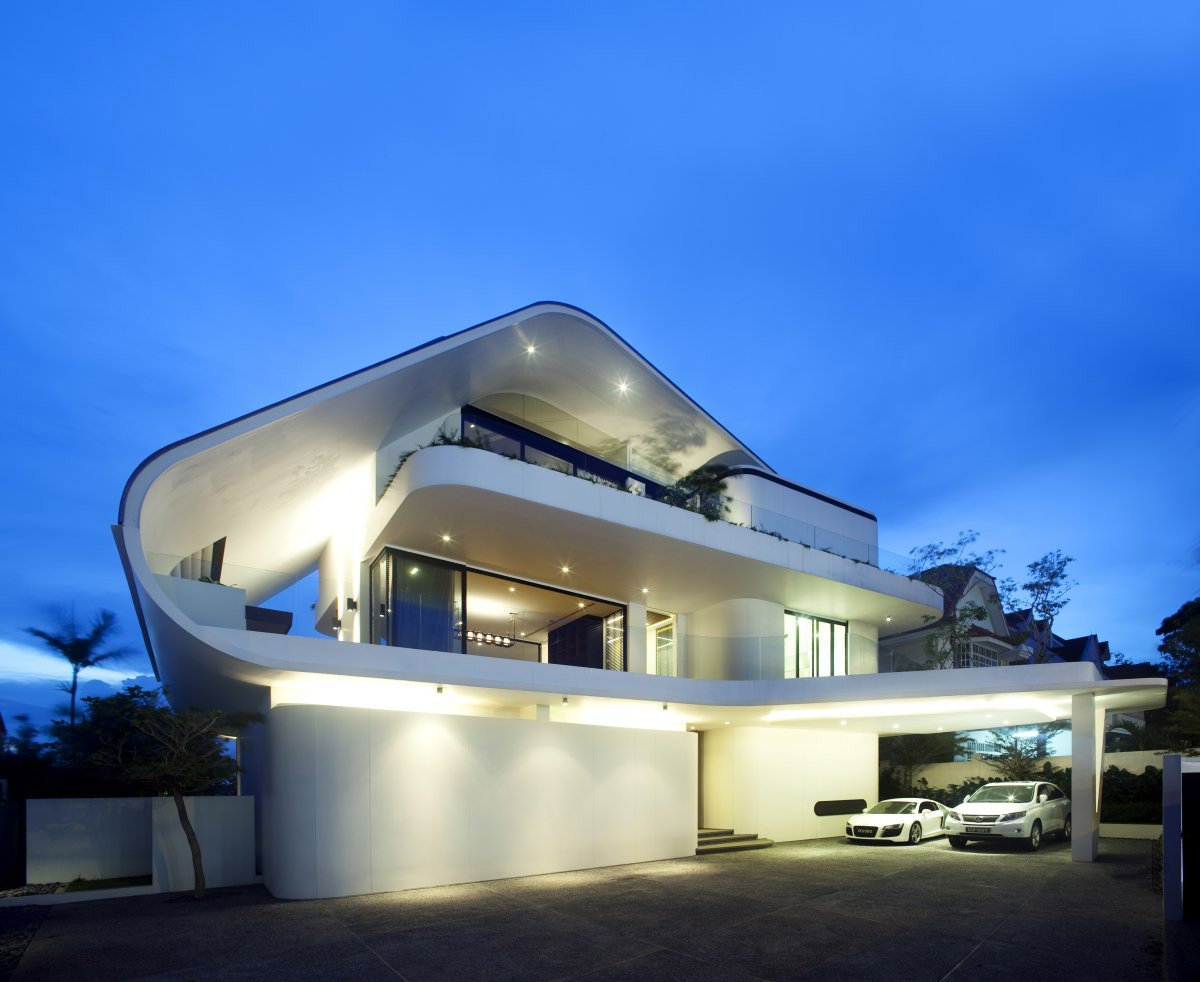#9779. Wavelike White Facade: Organic Architecture in Contemporary Expression

This modern residential house exemplifies outstanding organic architecture, where the fluid lines of the facade create a sense of movement and fluidity. In the twilight illumination, the sculptural quality of the building is particularly expressive. The snow-white facade with its wave-like canopy smoothly transitioning into walls seems to envelop the interior space of the house.
The architectural composition is built on the contrast between the massive upper volume with rounded corners and the more rectilinear lower level. The glass facades of the lower floor create an effect of lightness, while the protruding balconies with transparent railings expand the interior space of the house. The perimeter lighting of the building not only emphasizes its contours but also creates the effect of the structure floating above the ground.
Particularly interesting is the solution for the corner area with a smoothly curved canopy, which forms a protected space for cars. The design employs a technique of visual separation of volumes through lighting: the combination of internal and external illumination creates the impression that the upper part of the building is separated from the lower one and hovers in the air.
For one's own home, several techniques could be borrowed: the use of curvilinear forms to soften the overall appearance of the building, integration of landscape design into the architecture (plants are visible on the upper terrace), playing with lighting to emphasize architectural elements, and combining solid white surfaces with transparent glass ones.